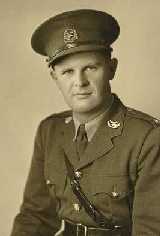Getting rich and famous by writing Canadian history is a rare feat. It is hard enough to turn a profit in a niche market with a limited population of book buyers, let alone trying to do so against the best efforts of the Luftwaffe! In the case of George F.G. Stanley's classic The Birth of Western Canada: A History of the Riel Rebellions, enemy bombing was added to the normal market problems of the Canadian historian.
Born in Calgary in 1907, Riel historian and political scientist Thomas Flanagan noted in a 1992 edition of
The Birth of Western Canada that Stanley had
early Métis and Sarcee acquaintances. He began studying at the University of Alberta before a Rhodes Scholarship sent him to Oxford, where he began work on his doctoral dissertation in 1931. In 1936, Stanley signed a contract with Longmans Green to publish his work. The book received modest attention and sold several hundred copies over the next several years.
 |
Herbert Mason's Iconic Photo of St. James
Cathedral, 30 Dec. 1940 |
On 29-30 December 1940, the Luftwaffe put the end to Stanley's sales, when bombing raids destroyed the entire Longmans stock. As Stanley wrote in 1960, "one of the minor casualties of this raid was the destruction of the premises of Longmans, Green and Company on Paternoster Row, and the loss of the remaining copies of the original edition of this book. [...] The book thus became, by accident of war rather than by deliberate policy on the part of the publishers, a very limited edition." (Stanley,
Birth, 1992, xviii) It was not until 1961 that the book became readily available again when the University of Toronto Press purchased the copyright and eventually printed another seven batches of the book.
As for George Stanley, he left a teaching position at Mount Allison University in New Brunswick to serve in the Historical Section of the Canadian army. By the end of the war he was acting as deputy director. His direct superior was none other than the legendary Canadian military historian C.P. Stacey. Stanley continued along this military bent for much of his career, serving at the Royal Military College of Canada for two decades. Despite his incredible contributions to Canadian history, Stanley is best known as the designer of the modern Canadian flag. Even in this act Stanley's military influences are shown. He took his inspiration from the layout of the RMC's banner.



No comments:
Post a Comment